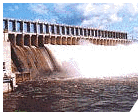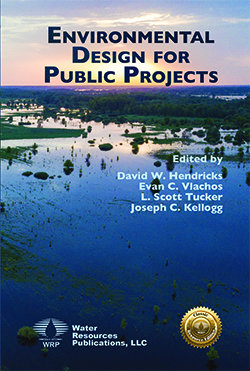PART I - THE CONTEXT OF PUBLIC PROJECTS
CHAPTER I - THE WORLD OF PUBLIC PROJECTS: TRADITIONS AND TRANSITIONS
> The Frontier Ethic
> Transition Toward a New Ethic
> Limitations of the Market
> Man the Builder
> Demands of Population and Affluence
> The Dilemma of the Industrial Society
> Explicating Themes
> Equilibrium
> Futures
> Author Notes
CHAPTER 2 - THE EVOLVEMENT PROCESS - By Norman I. Wengert
> Public Project Decision Making
> Influencing and Constraining Factors
> The Structure and Process of Decision Making for Public Projects
> Bureaucracy and the Realities of Executive Control
> The Network of Intergovernmental Relationships
> Realities of Political Party Responsibility
> Administrative Responsibility for Public Projects: An Overview
> Management Controls and Formal Coordinative Devices
> The Legislature and Public Project Decisions
> Goal Setting
> Project Evolvement in Transportation
> The Impact of the Automobile: Phase I, 1916-1956
> The Impact of the Automobile: Phase II, 1956-Present
> Barge Transportation
> Air Transportation and Airports
> Project Evolvement in Water Development
> Project Evolvement: Electric Power
> Author Notes
> References
>
CHAPTER 3 - ENGINEERING THE PHYSICAL INFRASTRUCTURE:
A. TRANSPORTATION - By Robert F. Baker
> Existing Transportation System
> Existing Management Activities
> System Outputs
> Interdisciplinary Studies
B. WATER - By Frank C. Boerger
> Types of Development
> Functions of Projects
> Effects of Water Management Projects
> Federal Agency Involvement
> Development Process
> Planning of Water Management Developments
> Planning Process
> Disciplines Applied to Planning
> Applications in Water Management Projects
> Considerations in Construction
> Considerations in Operation
C. POWER - By Lawrence M. Robertson
> Research and Development Goals
> The Environment and the Power Industry
> Western Systems Coordinating Council Environmental Guidelines
> References
> Author Notes
> Transportation
> Water
> Power
PART II - SUBSTANTIVE ELEMENTS
CHAPTER 4 - THE PHYSICAL SUBSTRATE - By the Editors
> Principles of Change
> Baseline Conditions
> Effects of Intervention
CHAPTER 5 – ECOLOGY - By William T. Helm and John C. Peters.
> Terminology and Principles
> Ecosystems
> Interface Areas
> Conditions Requiring Ecological Planning
> Methodology
> Planning Process
> Preconstruction Stage
> Construction Stage
> Operation and Maintenance Stage
> Ecological Rx
> The Prescription
> Glossary
> References
> Author Notes
CHAPTER 6 - THE HUMAN COMMUNITY - By Evan Vlachos
> Human Community and Social System
> Public Projects and Human Communities Interface
> Evaluating Public Projects Effects: Strategies and Tactics
> Planning and the Human Community: Remarks Towards Synthesis
> Glossary
> Bibliographical Commentary
> Author Notes
CHAPTER 7 - VISUAL HARMONY - By Dwayne C. Nuzum
> Historical Visual Aspects.
> Contemporary Visual Implications
> Visual Design Discipline Inputs
> Theoretical Base
> Methodology of Physical-Visual Aspects
> Problem Development
> Visual and Physical Design Goals
> Information Generation of the Existing Visual and Physical Design Situation
> Projected Visual and Physical Design Implications
> Program Development
> Alternative Design Development and Selection
|
|
> Specific Guidelines for the Physical Visual Aspects of Power Transmission Lines
> Location and Design Factors for Transmission Towers and Overhead Lines
> Power Line Rights-of-Way
> Power Line Design Criteria
> Specific Guidelines for the Physical-Visual Aspects of Transportation Systems
> Selection of Right-of-Way Routes
> Location and Design Factors for Transportation Systems
> Specific Guidelines for the Physical-Visual Aspects of Water Resource Development
> References
> Author Notes
PART III - SYNTHESIS AND EVALUATION
CHAPTER 8 - ENVIRONMENTAL LAW - By Norman I. Wengert
> The American Legal System.
> Constitutions and Statutes
> Public Projects and Public Law
> Environmental Law
> Common Law and Constitutional Constraints. Limitations on Legislation
> Common Law Actions Protecting the Environment
> Procedural Developments
> Environmental Legislation and Public Projects
> The National Environmental Policy Act.
> New Doctrines
> End Notes
> Author Notes
> Appendix A: National Environmental Policy Act of 1969
> Appendix B
CHAPTER 9 - THE ECONOMIC SYNTAX - By R. Burnell Held
> The Nature and Scope of Economics
> The Roles of Economists
> Public Works Projects in a Mixed Economy
> Public Works Projects and Efficient Use of Resources
> The Need for Valid Choice Indicators
> The General Welfare
> Benefit-Cost Analysis
> The Interest Rate
> Economic Analysis of Highway Projects
> Weighing Values
> Summary and Conclusions. Bibliography
> Glossary
> Author Notes
CHAPTER 10 - SYSTEMS ANALYSIS - By A. Bruce Bishop
> Systems, Analysts, and Public Projects
> Defining and Limiting the Problem
> Formulating Objectives
> Constructing Systems Models
> Evaluating Alternatives
> Caveats and Guideposts
> References
> Author Notes
CHAPTER 11 - EVALUATION AND PLANNING TECHNIQUES - By David Seader
> The Evaluation Function in the Design Process
> Comprehensive Evaluation Techniques. Comparison of Methods
> References
> Author Notes
CHAPTER 12 - PUBLIC PARTICIPATION - By Desmond M. Connor
> What is Public Participation?
> Function in Planning
> Designing a Program. Prospect
> References
> Author Notes
CHAPTER 13 - MANAGEMENT METHODS - By Douglas A. Benton and Henry L. Michel.
> The Nature of Management
> Elements of Decision Making: Planning and Control
> Human Resources Management
> Managing Conflict and Change
> Design and Operation of Organization Structures
> Implementation
> References
> Author Notes
PART IV - CASES
CHAPTER 14A - CASES: FORT COLLINS BYPASS - By Wayne J. Capron
> The Locale
> The Highway Network
> Relevant Institutional Structure Genesis of the Fort Collins Expressway Project
> Contending Forces and Parties. Traffic Studies
> Environmental Study...
> Draft Environmental Impact Statement Commentary
> References
> Author Notes
CHAPTER 14B - CASES: LOGAN CANYON HIGHWAY - By William T. Helm
> Introduction
> Recent Construction History
> Formation of Citizen's Advisory Committee. Effects of Interdisciplinary Effort
> References
> Author Notes
CHAPTER 15 - PERSPECTIVES AND FUTURE CAPABILITIES - By P.H. McGauhey
> The Question of Feasibility
> Need for Environmental Design
> Development of Concepts and Methodology
> Author Notes |





